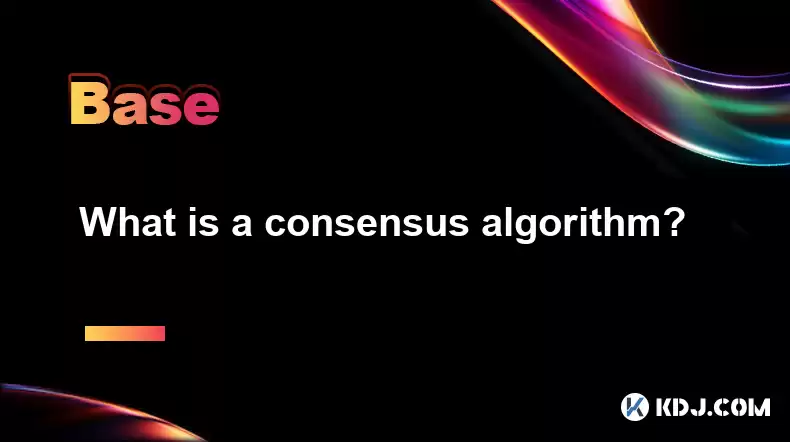-
 Bitcoin
Bitcoin $114200
0.00% -
 Ethereum
Ethereum $3637
0.56% -
 XRP
XRP $2.950
-2.01% -
 Tether USDt
Tether USDt $0.9999
0.02% -
 BNB
BNB $761.0
0.55% -
 Solana
Solana $164.1
-1.38% -
 USDC
USDC $0.9999
0.02% -
 TRON
TRON $0.3332
0.36% -
 Dogecoin
Dogecoin $0.2012
-0.52% -
 Cardano
Cardano $0.7261
-1.41% -
 Hyperliquid
Hyperliquid $37.62
-2.13% -
 Stellar
Stellar $0.3930
-2.65% -
 Sui
Sui $3.441
-0.16% -
 Bitcoin Cash
Bitcoin Cash $563.8
0.70% -
 Chainlink
Chainlink $16.50
0.09% -
 Hedera
Hedera $0.2424
-0.14% -
 Ethena USDe
Ethena USDe $1.001
0.01% -
 Avalanche
Avalanche $22.20
0.00% -
 Litecoin
Litecoin $118.0
-2.48% -
 UNUS SED LEO
UNUS SED LEO $8.991
0.12% -
 Toncoin
Toncoin $3.195
-3.87% -
 Shiba Inu
Shiba Inu $0.00001217
0.12% -
 Uniswap
Uniswap $9.674
-0.21% -
 Polkadot
Polkadot $3.633
1.00% -
 Monero
Monero $295.3
-0.82% -
 Dai
Dai $0.9999
0.00% -
 Bitget Token
Bitget Token $4.321
-0.41% -
 Cronos
Cronos $0.1392
0.73% -
 Pepe
Pepe $0.00001027
-0.89% -
 Aave
Aave $258.5
0.32%
What is a consensus algorithm?
Blockchain security relies on consensus algorithms like Proof-of-Work, Proof-of-Stake, and Delegated Proof-of-Stake, each offering trade-offs in security, scalability, and energy efficiency. Understanding these algorithms is crucial for evaluating cryptocurrencies.
Mar 15, 2025 at 07:46 pm

Key Points:
- Consensus algorithms are crucial for maintaining the security and integrity of a blockchain network.
- Different algorithms offer varying levels of security, scalability, and energy efficiency.
- Popular algorithms include Proof-of-Work (PoW), Proof-of-Stake (PoS), and Delegated Proof-of-Stake (DPoS).
- Understanding consensus mechanisms is vital for evaluating the strengths and weaknesses of different cryptocurrencies.
What is a Consensus Algorithm?
In the decentralized world of cryptocurrencies, a consensus algorithm is the backbone that ensures the integrity and security of the blockchain. It's the mechanism that allows all participating nodes (computers) in a network to agree on the valid state of the blockchain, despite the absence of a central authority. This agreement is essential because it prevents fraudulent transactions and ensures that everyone has the same version of the blockchain. Without a robust consensus mechanism, a cryptocurrency network would be vulnerable to attacks and manipulation.
How Consensus Algorithms Work
Consensus algorithms work by establishing a set of rules that determine how new blocks of transactions are added to the blockchain. These rules usually involve a process of verification and validation by multiple nodes. The specific rules vary depending on the algorithm used, but the core principle remains the same: achieving agreement on the valid state of the blockchain. This prevents double-spending, where the same cryptocurrency is spent twice.
Popular Consensus Algorithms:
Several consensus algorithms exist, each with its own strengths and weaknesses. Let's explore some of the most prominent ones:
- Proof-of-Work (PoW): This is the algorithm used by Bitcoin. It requires miners to solve complex computational problems to validate transactions and add new blocks to the blockchain. The first miner to solve the problem gets to add the block and receives a reward in cryptocurrency. PoW is known for its security but is highly energy-intensive.
- Proof-of-Stake (PoS): Unlike PoW, PoS doesn't rely on energy-intensive computations. Instead, it selects validators based on the amount of cryptocurrency they stake (lock up) in the network. The more cryptocurrency a validator stakes, the higher their chance of being selected to validate transactions and add new blocks. PoS is generally considered more energy-efficient than PoW.
- Delegated Proof-of-Stake (DPoS): This is a variation of PoS where token holders vote for delegates who then validate transactions. This approach aims to improve scalability and reduce energy consumption compared to PoW. However, it can also raise concerns about centralization if a small number of delegates control a significant portion of the network's validation power.
- Proof-of-Authority (PoA): This algorithm relies on pre-selected validators who are trusted entities. Their identity is known, and they are responsible for validating transactions. PoA is often used in private or permissioned blockchains where trust and identity are paramount. However, it introduces a degree of centralization that may not be suitable for all applications.
Choosing the Right Consensus Algorithm:
The selection of a consensus algorithm is a critical decision for any cryptocurrency project. The choice depends on various factors, including the desired level of security, scalability, and energy efficiency. Each algorithm presents trade-offs, and developers must carefully weigh these factors when making their choice. For instance, PoW offers high security but is energy-intensive, while PoS is more energy-efficient but may be susceptible to attacks if not implemented properly.
The Importance of Understanding Consensus Algorithms:
Understanding consensus algorithms is vital for anyone interested in the cryptocurrency space. It helps in evaluating the security and scalability of different cryptocurrencies. Knowing the strengths and weaknesses of various algorithms allows investors and users to make informed decisions about which cryptocurrencies to invest in or use. The algorithm's efficiency and security directly impact the overall functionality and longevity of a blockchain network.
Common Questions and Answers:
Q: What is the most secure consensus algorithm?
A: There's no single "most secure" algorithm. The security of a consensus algorithm depends on its implementation and the specific context. PoW is generally considered highly secure due to its energy-intensive nature, making attacks computationally expensive. However, PoS variations, when properly implemented, can also offer high security.
Q: Which consensus algorithm is the most energy-efficient?
A: Proof-of-Stake (PoS) and its variations, like DPoS, are generally considered far more energy-efficient than Proof-of-Work (PoW). PoW requires significant computational power, leading to high energy consumption.
Q: What are the risks associated with different consensus algorithms?
A: PoW faces challenges with scalability and high energy consumption. PoS can be vulnerable to attacks like "nothing-at-stake" if not carefully designed. DPoS risks centralization if a small group of delegates dominate the validation process. PoA's reliance on trusted validators introduces a degree of centralization, potentially compromising decentralization goals.
Q: How do consensus algorithms contribute to decentralization?
A: Consensus algorithms are fundamental to decentralization. They allow a distributed network of nodes to agree on the state of the blockchain without relying on a central authority. This eliminates single points of failure and reduces the risk of censorship or manipulation.
Q: Can a blockchain use multiple consensus algorithms?
A: While less common, some blockchains explore hybrid approaches combining elements of different consensus algorithms to leverage their respective strengths and mitigate their weaknesses. This is an active area of research and development.
Q: What is the future of consensus algorithms?
A: The field of consensus algorithms is constantly evolving. Researchers are actively exploring new and improved algorithms that aim to enhance security, scalability, and energy efficiency. This includes research into more environmentally friendly alternatives and algorithms that can better handle the increasing demands of blockchain networks.
Disclaimer:info@kdj.com
The information provided is not trading advice. kdj.com does not assume any responsibility for any investments made based on the information provided in this article. Cryptocurrencies are highly volatile and it is highly recommended that you invest with caution after thorough research!
If you believe that the content used on this website infringes your copyright, please contact us immediately (info@kdj.com) and we will delete it promptly.
- EIP-7999: Ethereum's Fee Fixer-Upper – Is This the End of Gas Fee Nightmares?
- 2025-08-06 15:10:22
- Ethereum Withdrawals, Institutional Confidence, and a Potential Price Rally: Decoding the Signals
- 2025-08-06 15:30:12
- Ethereum Reform: EIP-7999 and the Quest for Fee-less Crypto?
- 2025-08-06 15:30:12
- XRP, MAGACOIN FINANCE, and Ethereum: What's Hot in the Crypto World?
- 2025-08-06 15:35:12
- Unilabs, Ethereum, and Dogecoin: Navigating the Crypto Landscape
- 2025-08-06 15:35:12
- ETH, BTC, XRP: Navigating Crypto Volatility and Spotting the Next Big Thing
- 2025-08-06 15:40:11
Related knowledge

What is the difference between CeFi and DeFi?
Jul 22,2025 at 12:28am
Understanding CeFi and DeFiIn the world of cryptocurrency, CeFi (Centralized Finance) and DeFi (Decentralized Finance) represent two distinct financia...

How to qualify for potential crypto airdrops?
Jul 23,2025 at 06:49am
Understanding What Crypto Airdrops AreCrypto airdrops refer to the distribution of free tokens or coins to a large number of wallet addresses, often u...

What is a crypto "airdrop farmer"?
Jul 24,2025 at 10:22pm
Understanding the Role of a Crypto 'Airdrop Farmer'A crypto 'airdrop farmer' refers to an individual who actively participates in cryptocurrency airdr...

What is the difference between a sidechain and a Layer 2?
Jul 20,2025 at 11:35pm
Understanding the Concept of SidechainsA sidechain is a separate blockchain that runs parallel to the main blockchain, typically the mainnet of a cryp...

What is the Inter-Blockchain Communication Protocol (IBC)?
Jul 19,2025 at 10:43am
Understanding the Inter-Blockchain Communication Protocol (IBC)The Inter-Blockchain Communication Protocol (IBC) is a cross-chain communication protoc...

How does sharding improve scalability?
Jul 20,2025 at 01:21am
Understanding Sharding in BlockchainSharding is a database partitioning technique that is increasingly being adopted in blockchain technology to enhan...

What is the difference between CeFi and DeFi?
Jul 22,2025 at 12:28am
Understanding CeFi and DeFiIn the world of cryptocurrency, CeFi (Centralized Finance) and DeFi (Decentralized Finance) represent two distinct financia...

How to qualify for potential crypto airdrops?
Jul 23,2025 at 06:49am
Understanding What Crypto Airdrops AreCrypto airdrops refer to the distribution of free tokens or coins to a large number of wallet addresses, often u...

What is a crypto "airdrop farmer"?
Jul 24,2025 at 10:22pm
Understanding the Role of a Crypto 'Airdrop Farmer'A crypto 'airdrop farmer' refers to an individual who actively participates in cryptocurrency airdr...

What is the difference between a sidechain and a Layer 2?
Jul 20,2025 at 11:35pm
Understanding the Concept of SidechainsA sidechain is a separate blockchain that runs parallel to the main blockchain, typically the mainnet of a cryp...

What is the Inter-Blockchain Communication Protocol (IBC)?
Jul 19,2025 at 10:43am
Understanding the Inter-Blockchain Communication Protocol (IBC)The Inter-Blockchain Communication Protocol (IBC) is a cross-chain communication protoc...

How does sharding improve scalability?
Jul 20,2025 at 01:21am
Understanding Sharding in BlockchainSharding is a database partitioning technique that is increasingly being adopted in blockchain technology to enhan...
See all articles

























































































